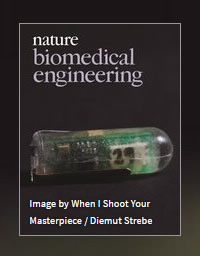Nuclear techniques have been used to validate the structure of a new hydrogel, developed by a group of Japanese researchers, with potential to treat various eye disorders.
The elastic gel administered in liquid form turned jelly-like within minutes after injection into the eye of a laboratory animal, replacing the clear gelatinous fluid.
Researchers from the University of Tokyo, University of Tsukuba, Osaka University and ANSTO have just published their findings in Nature Biomedical Engineering that may help pave the way for new eye surgery techniques.
 |
“Our collaborators have designed an exquisite new method of synthesising water-compatible polymer gels that have real longevity, which means they should be directly applicable for a range of biomedical treatments,” said Instrument scientist Dr Elliot Gilbert of the Australian Centre for Neutron Scattering, who is a co-author on the study.
“By measuring the small angle neutron scattering on the QUOKKA instrument enabled us to define the structure of the polymer precursor and the corresponding gel on a length scale of one to several hundred nanometers, or down to one hundred thousand times smaller than the width of a human hair.
This was the relevant length scale on which to understand how these polymers assemble into a gel as well as their broader implications for biomedicine,” said Gilbert.
 |
| The Quokka instrument (left) is used for small angle neutron scattering |
Various retinal diseases, such as retinal detachment, require surgery to replace the vitreous humour, the gel-like substance that fills the space between the retina and the lens in the eye.
While gas and silicone oil have conventionally been used as substitutes for vitreous humour, these materials do not mix well with water and are not suited for long-term use.
In contrast, hydrogels—elastic gels with high water content—are promising materials because they are composed of substances similar to those found in soft tissues in our body and mainly consist of water.
“The downside of conventional hydrogels is that, after months and years, they start to absorb water and swell, irritate and exert pressure on the surrounding tissues, eventually causing damage,” explained Associate Professor Tadamasa Sakai of the University of Tokyo’s Graduate School of Engineering, a bioengineer who co-authored the study.
“We knew that swelling could be avoided by lowering the amount of polymers in the hydrogel, but lowering the concentration too much would require hours for the gels to form, thereby making them impractical for surgery.”
Sakai and his collaborators at the University of Tokyo and Tsukuba University developed a hydrogel with a low polymer concentration that could be introduced into the eye as a liquid and capable of gelling within 10 minutes after injection to replace the vitreous humour.
In a separate experiment, the scientists showed that the animals affected with retinal detachment recovered once they were treated with the new hydrogels.
“Hydrogels are promising biomaterials, but their physical properties have been difficult to control. We wanted to show that these difficulties can be overcome by designing molecular reactions and I think we’ve been successful,” commented Sakai.
The hydrogels’ properties may also make them suitable for broader applications to treat a wide range of conditions as a space-filling gel to replace soft tissues damaged by trauma, tumours and degenerative diseases.
The efficacy and safety of this new hydrogel is yet to be tested in human subjects.
The content has been adapted from media information provided by Associate Professor Tadamasa Sakai of the University of Tokyo
DOI:10.1038/s41551-017-0044


